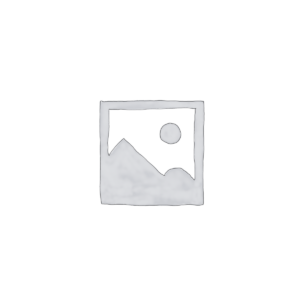Curious about bio-hacking? You’ve likely heard about people pushing their limits beyond what seems possible. Maybe you’re fighting afternoon fatigue, brain fog, or simply feeling off. Bio-hacking isn’t about becoming a cyborg, but rather taking charge of your biology.
Table of Contents:
- What is Bio-hacking?
- Popular Bio-hacking Techniques
- The DIY Biology Movement: Bio-hacking at Home
- Nutrigenomics: Personalized Nutrition Through Bio-hacking
- Navigating the Risks of Bio-hacking
- Bio-hacking: The Path to Long-Term Wellness
- Conclusion
What is Bio-hacking?
Bio-hacking is a DIY approach to health and wellness. Individuals experiment with their bodies and biological processes to discover what improves their well-being. It has become an increasingly popular way for individuals to take control over their own health. Bio-hacking encompasses various techniques and practices.
Popular Bio-hacking Techniques
Intermittent fasting is a common practice in the biohacking community, cycling between eating and not eating. Many find it aids weight loss, sharpens mental clarity, and balances blood sugar. It could potentially lower heart rate and improve immune function. If you’re underweight, have a history of eating disorders, or certain medical conditions (check here first), consult a medical professional.
More aggressive approaches like an intermittent diet should be discussed with your doctor.
Cold plunges, or cold water therapy, decrease inflammation and may benefit the cardiovascular system. Cold showers can be more invigorating than caffeine. As with any aggressive therapy such as an intermittent diet, discussing with your physician is crucial for optimal health and safety.
Nootropics, known as “smart drugs,” aim to enhance cognitive function. They often contain substances like creatine and caffeine, which can offer temporary boosts. Nootropics include a wide variety of substances and supplements.
Wearable technology like smart watches (research) allows constant data collection and biological feedback. They offer various features like monitoring heart rate and activity levels.
Bio-hacking incorporates data-driven experiments with sleep, diet, supplementation, and exercise intensity (like Zone 2 exercise). Cold water immersion therapy, certain music types, and red/infrared light therapy are now standard practices in biohacking. This can include practices such as bulletproof coffee with MCT oil to optimize daily performance.
The DIY Biology Movement: Bio-hacking at Home
DIY bio (DIY biology) is a fascinating facet of biohacking. Scientists are democratizing science by sharing techniques and knowledge. This empowers individuals to conduct experiments at home, promoting innovation beyond institutional boundaries.
Nutrigenomics: Personalized Nutrition Through Bio-hacking
Nutrigenomics explores the connection between genes and food. Scientists use it to understand gene-food relationships and how they affect health risks. This field may allow for the creation of customized diets tailored to individual genetic predispositions and health needs.
Imagine getting your DNA analyzed (see DNA article) and receiving a meal plan specifically for you. Nutrigenomics uses information about your genetic makeup to optimize your diet.
Navigating the Risks of Bio-hacking
Bio-hacking often focuses on lifestyle changes and data monitoring (example here). However, some biohacking involves injections and implants. Many people consider these procedures experimental and unregulated. Proceed cautiously with methods like chemical injections or genetic sequencing aimed at “enhancing” human capabilities.
Safety is a major concern in bio-hacking because a lot of self-experimentation lacks professional medical oversight. Ensure any DIY biology or gene editing is done by a trained professional. Vitamin levels, blood tests, and blood work should be overseen by a healthcare provider.
Non-prescription “smart drugs” like caffeine and caffeine can increase energy and boost brain performance, but are dangerous if misused. A recent study on non-prescribed Ritalin and Adderall revealed negative outcomes. These include mental instability, depression, risky habits, and academic decline. Discuss supplements and other changes to your diet with a trained professional. Consulting with a physician, particularly for those genetically predisposed to certain conditions or at higher risk of cardiovascular disease is essential for ensuring safe and beneficial outcomes.
Before buying devices or chemical mixtures, seek professional guidance. Physician consult is vital when combining less-proven medical modalities and approaches.
Bio-hacking is a new field with uncertain long-term impacts.
Bio-hacking: The Path to Long-Term Wellness
Personalizing wellness journeys is empowering. Bio-hacking encourages you to become a researcher of your own well-being. Whether through eating healthy, ice baths, or other modalities, experiment (safely.) to find what works for you.
Bio-hacking can unlock new avenues for health and wellness. It promotes mindful awareness of your body, allowing you to respond to its needs. Biohacking involves making changes to your lifestyle and habits to improve your overall well-being.
Conclusion
Bio-hacking isn’t futuristic fantasy; it’s a tangible approach to addressing crucial mental and public health concerns, particularly regarding longevity in our fast-paced, aging world.
It involves asking, “How can I feel better?” and taking charge of your health. Experiment with safe techniques (learn more here) and embrace body awareness.
Bio-hacking prompts you to become more attuned to your body, enabling you to interpret its signals and optimize your health for the better. Bio-hacking typically involves making small changes to your diet and lifestyle, such as intermittent fasting, supplements, exercising, or cold water therapy, to improve athletic performance and everyday life. It empowers you to make informed decisions about your health.
